SBI PO Main Data Analysis & Interpretation
As we know the much-awaited examination i.e. SBI PO Main 2019 is scheduled to be held tomorrow. So, we are providing you with Full-Length MCQs on Data Analysis & Interpretation. Practice these Full-Length MCQs to score high marks in the Data Analysis & Interpretation section.
Q1. Arun takes 4 more days than Rana to complete a work. Yash is 20% more efficient than Rana and takes 1 less day Rana takes. Find the number of days taken by all of them to complete twice this work together?
Q2. A man deposited his savings in 3 different schemes X, Y and Z and they offer SI at 10% per annum, SI at 6% per half year and CI at 10% per annum respectively. At the end of two years, total interest obtained by man from all the three schemes is Rs. 2580. Find initially total amount deposited by man, if amount invested in scheme Z is twice of each of scheme X and scheme Y and amount in both X and Y are same (in Rs.)?
3000
6000
9000
12000
7000
Q3. A shopkeeper have 3 juice machines, Ist for fresh oranges, then the remaining pulp (waste other than juice) of Ist machine is used in second and similarly remaining of 2nd machine is used for 3rd. If first machine, squeeze 90% by weight juice, second give 40% by weight and last give 16 ⅔% by weight juice. Find the amount of juice (in ml) obtained by shopkeeper in 1 kg of orange. [Assume 1 gm is equal to 1.05 ml]
950.5 ml
900 ml
1000 ml
950 m l
997.5 ml
Q4. Distance between Delhi and Jaipur is 300 km. Aman starts from Delhi and Rajiv from Jaipur at same time. After two hours, Aman realized he was travelling slow and therefore increased his speed by 25% and meet Rajiv at a point 108 km from Delhi. Find the increased speed of Aman, if Rajiv derived at a constant speed of 75 km/hr.
40 km/hr
50 km/hr
60 km/hr
55 km/hr
65 km/hr
Directions (5-8): Find the wrong number which does not follow the specific pattern in each of the given number series ?
Q5. 5531, 5506, 5425, 5304, 5135, 4910, 4621
5531
5425
4621
5135
5506
Q6. 6, 7, 9, 13, 26, 37, 69
7
26
69
37
9
Q7. 1, 3, 10, 36, 152, 760, 4632
3
36
4632
760
152
Q8. 157.5, 45, 15, 6, 3, 2, 1
1
2
6
157.5
45
Q9. Quantity I: Percentage mark-up above cost price of an article so as to gain 33% after allowing the customer a discount of 5%.
Quantity II: Percentage of dancers under 25 years out of a group of 20 singers and 40 dancers if 20% of the singers are under 25 years old and 40% of the entire group is under 25 years.
Quantity I > Quantity II
Quantity I < Quantity II
Quantity I ≥ Quantity II
Quantity I ≤ Quantity II
Quantity I = Quantity II or No relation
Q10. Quantity I: Value of fifth number when Average of five numbers is 61. The average of 1st and 3rd number is 69 and average of second and fourth number is 69.
Quantity II: No. of boys in the class. The average age of all students of a class is 18 years. The average age of boys of the class is 20 years and that of the girls is 15 years. The no. of girls in the class is 20.
Note: Compare the magnitudes of quantities.
Note: Compare the magnitudes of quantities.
Quantity I > Quantity II
Quantity I < Quantity II
Quantity I ≥ Quantity II
Quantity I ≤ Quantity II
Quantity I = Quantity II or No relation
Q11. A 20 litres mixture contains milk and water in the respective ratio of 3 : 2. Then 10 litres of the mixture is removed and replaced with pure milk and the operation is repeated once more. At the end of the two removals and replacements, what is the ratio of milk and water in the resultant mixture respectively ?
17 : 3
9 : 1
4 : 17
5 : 3
3 : 14
Directions (12-15): What should come in place of the question mark (?) in the following question?
1627.26
1842.281842.28
2159.51
1972.88
2171.99
4(√5+√7)
6(√3+√5)
4(√3+√5)
3(√5+√7)
9(√2+√3)
8517
9517
8717
7087
9087
41.56
51.46
51.56
65.56
71.56
Directions (16-20): Table given below shows total number of applicants, who have applied for CDS exam in the five years. Percentage of applicants appeared in tier I exam, percentage of applicants qualified in tier I and tier II. Line graph shows percentage of applicants got selection in CDS exam. Read the data carefully and answer the questions:
Note – All applicants qualified in tier I appeared for tier II.
Q16. Number of applicants, who have got the final selection in the year 2017, is how many percent less than number of applicants, who have got the final selection in the year 2014?
Q17. Find the difference between number of applicants, who have got final selection in the years 2013 & 2016 together and number of applicants, who have got final selection in the year 2014 & 2015 together?
5
8
3
6
11
Q18. Find the ratio between applicants qualified in tier II but did not get final selection in the year 2017 to applicants qualified in tier I but did not qualify for tier II in the year 2014?
7 : 20
7 : 22
7 : 19
7 : 18
7 : 16
Q19. Total applicants appeared for tier I in the year 2017 is what percent more than total applicants appeared for tier II in the year 2015?
Q20. Find the total number of applicants, who did not qualify in tier I in the year 2014, 2016 & 2017 together?
10390
10590
10790
10290
10190
Q21. In a set of prime and composite numbers, the composite numbers are twice the number of prime numbers and the average of all the numbers of the set is 9. If the number of prime numbers and composite numbers are exchanged then the average of the set of numbers is increased by 2 and during the exchange of the numbers the average of the prime numbers and composite numbers individually remained constant, then find the ratio of the average of composite numbers to the average of prime numbers (initially).
7 : 13
13 : 7
9 : 11
13 : 15
Can’t be determined
Q22. Ages of A, B, and C are in geometric progression while ages of A, Q and R is in arithmetic progression. If ratio between common difference of arithmetic progression formed by second group (A, Q, R) and common ratio of geometric progression formed by first group (A, B and C) is 2: 1 and total sum of ages of first group (A, B, C) is 182 and total sum of second group (A, Q, R) is 60 then which of the following options given below will be the ages of A, B, C respectively.
126, 42, 14
42, 14, 126
14, 42, 126
36, 60, 86
Can’t be determined
Directions (23-25): Study the following information carefully and answer the questions given beside:
There are five ISKCON temples in five different cities of India: Vrindavan, Ahmedabad, Anantpur, Baroda and Banglore. The total number of ISKCON devotees in all the cities are 9000. The strength of Vrindavan temple is 20% and that of Ahmedabad is 35% of the total devotees of the cities. Baroda and Banglore have equal strength. 30% of the devotees of Vrindavan know only Sanskrit. 40% devotees of temple in Baroda know only Hindi.
There are 10 more devotees in Ahmedabad temple who know only Hindi than the number of devotees of Baroda temple who know only Hindi. The strength of Anantpur temple is 50% that of temple Vrindavan. Two-fifths of devotees of Ahmedabad temple know both the languages. 40% devotees of Vrindavan temple know both languages.
50% devotees of Anantpur temple know only Hindi and the number of devotees of Anantpur temple who know both the languages is equal to the number of devotees of Anantpur who know only Sanskrit. The number of devotees who know only Sanskrit from Banglore temple is equal to the number of devotees who know only Hindi from Baroda temple.
The number of devotees who know only Hindi from Banglore temple is 40 more than the number of devotees who know only Hindi from Anantpur temple. The number of devotees of Baroda temple who know only Sanskrit is 45 more than the number of devotees who know both the languages from Banglore temple. Each devotee knows at least one of the two languages. Sanskrit and Hindi.
Q23. What is the percentage of the number of ISKCON devotees who know both the languages?
36.5%
34.5%
26.5%
24.5%
44.5%
Q24. What is the difference between the number of ISKCON devotees who know Sanskrit and those who know only Hindi ?
4500
4000
2500
3500
3200
Solution:
Following the given information, we can create a table as follows:
Total number of devotees who know Sanskrit = 540 + 1250 + 225 + 500 + 630 = 3145 + 3105 (from both the languages) = 6250
Total number of devotees who know only Hindi = 540 + 640 + 450 + 630 + 490 = 2750
Reqd. difference = 6250 – 2750 = 3500
Q25. The number of Banglore ISKCON temple devotees who know only Sanskrit language is how many times of those who know both the languages from Vrindavan temple?
1.875 times
0.875 times
0.675 times
1.225 times
0.725 times
Solution:
Following the given information, we can create a table as follows:
Q26. Total surface area of a cylinder mounted with a hemispherical bowl on one end is 2552 cm². If height of cylinder is 8 cm, then find the volume of the solid body? (cm3)
Q27. Train A running at the speed of 108 km/hr crosses a man, who running in the opposite direction at the speed of 12 km/hr in 7.2 sec. If speed of train A increased by 25% and it takes 48 seconds to cross another train B, which running at the speed of 90 km/hr in same direction. Find the length of train B?
280 meters
360 meters
180 meters
160 meters
220 meters
Q28. Vessel A contains (X + 24) L of mixture of milk and water in the ratio of 7 : 8, while vessel B contains (X + 54) L of same mixture of milk and water in the ratio of 3 : 2. If 37 ½ % of mixture from vessel A and 40% of mixture from vessel B taken out and mixed in vessel C, then the remaining mixture in vessel B is 15L more than that of in vessel A. find quantity of milk in vessel C?
49 litre
57 litre
55 litre
53 litre
51 litre
Directions (29-30): The following questions are accompanied by two statements (I) and (II). You have to determine which statements(s) is/are sufficient/necessary to answer the questions.
Q29. What is the population of the city A?
I. The ratio of the population of males and females in city A is 27 : 23 and the difference between their population is 100000.
II. The population of city A is 80% of that of city B. The difference between populations of city A and city B is 312500.
Statement (I) alone is sufficient to answer the question but statement (II) alone is not sufficient to answer the questions.
Statement (II) alone is sufficient to answer the question but statement (I) alone is not
Both the statements taken together are necessary to answer the questions, but neither of the statements alone is sufficient to answer the question.
Either statement (I) or statement (II) by itself is sufficient to answer the question.
Statements (I) and (II) taken together are not sufficient to answer the question.
Q30. What is the volume of the sphere?
I. Curved surface area of hemisphere is equal to the total surface area of the cylinder having radius and height in ratio 3 : 4.
II. When we cut sphere into two hemispheres then total surface area is equal to the area of a circle whose radius is 21 cm.
Statement (I) alone is sufficient to answer the question but statement (II) alone is not sufficient to answer the questions.
Statement (II) alone is sufficient to answer the question but statement (I) alone is not
Both the statements taken together are necessary to answer the questions, but neither of the statements alone is sufficient to answer the question.
Either statement (I) or statement (II) by itself is sufficient to answer the question.
Statements (I) and (II) taken together are not sufficient to answer the question.
Solution:
From I,
No result can be determined.
From II,
When we cut sphere into hemisphere
total surface area of two hemisphere
total surface area of two hemisphere
Total surface area of two hemisphere
3πr² + 3πr² = π × 21 × 21
r = can be find out
So, volume of sphere can be find out.
So, only II, sufficient to give answer
of the question
of the question
Directions (31–35): Refer to the table given below and answer the questions.
Table shows the total number of votes, percentage of valid votes and ratio of valid votes of males and valid votes of females in different village.
Q31. If the average number of valid votes in village A, B and D is 750. Then what is the difference of valid votes of male and female in village A?
170
130
230
190
160
Q32. If the ratio of valid votes of village C and D together is 3 : 2. Then valid votes of females in village C is approximately what percent more than valid votes of male in village D? [Given that valid votes of females is 50% more than that of male in village D]
113%
129%
119%
123%
131%
Q33. If the difference of valid votes of male and female of village E is 250 and total number of valid votes in village C is 20% more than total votes in village E. Then find the total invalid votes in village C?
800
600
1200
900
850
Q34. If the average of valid votes of male in village A and Village D is 280 and the average of invalid votes of Village A and D is 520. Then find the percentage of valid votes of female in village A with respect to valid votes of female in village D?(Total votes in village A is 500)
65%
60%
70%
80%
75%
Q35. If the valid votes of males is 40% less than valid votes of females in both villages B and D, then find the difference of total male valid votes in village B and D together and total female valid votes in same villages together?
280
270
260
170
250
You May also like to Read:
- Quantitative Aptitude Study Notes for Bank Exams
- 100 MCQs Data Interpretation | Download Free PDF's of DI
- Quantitative Aptitude Questions for all Competitive Exams
Note: We will update the full length mock of Reasoning & Computer Aptitude, General/ Economy/ Banking Awareness and English Language for SBI PO Main at 01:00 P.M. 3:00 P.M. and 5:00 P.M. respectively.
All the Best BA'ians for SBI PO and Clerk Main 2019!!

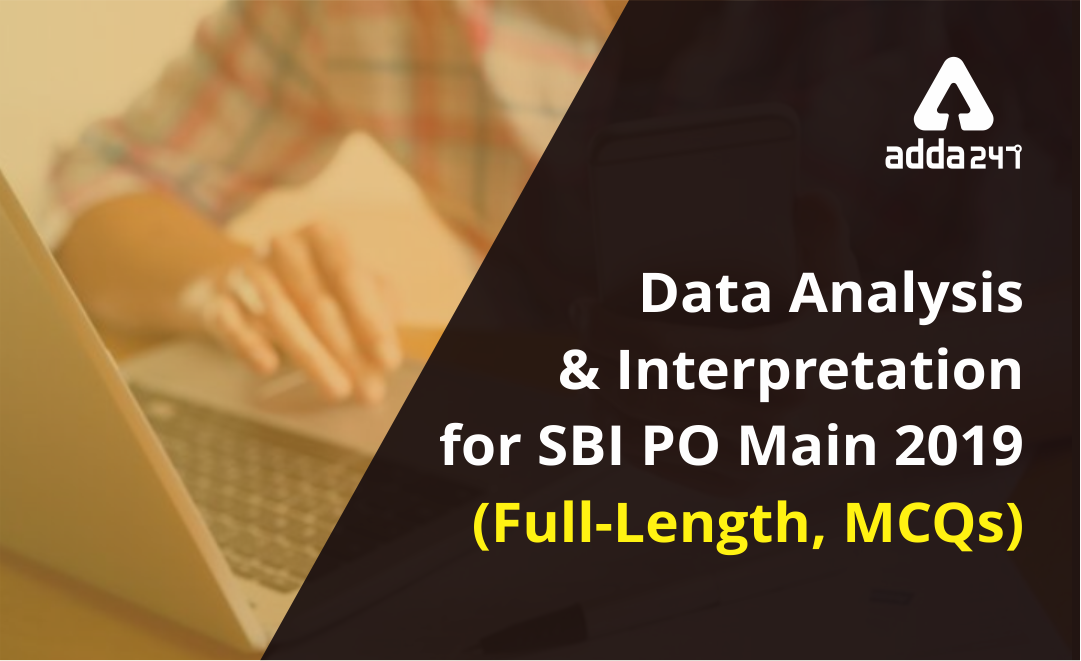






















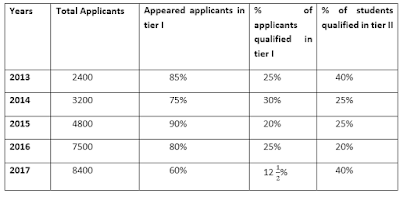
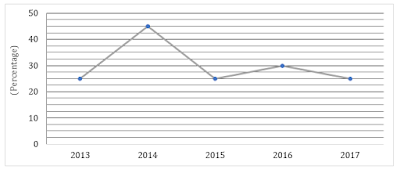


















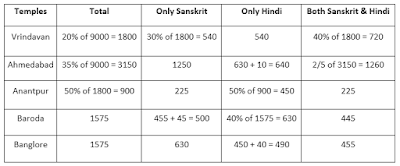















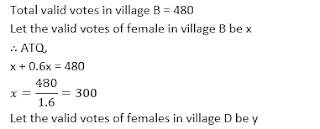
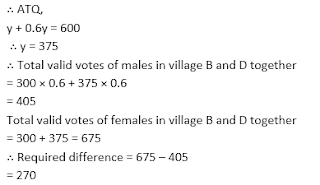



 GA Capsule for SBI Clerk Mains 2025, Dow...
GA Capsule for SBI Clerk Mains 2025, Dow...
 The Hindu Review October 2022: Download ...
The Hindu Review October 2022: Download ...
 LIC Assistant Syllabus 2025 and Exam Pat...
LIC Assistant Syllabus 2025 and Exam Pat...





